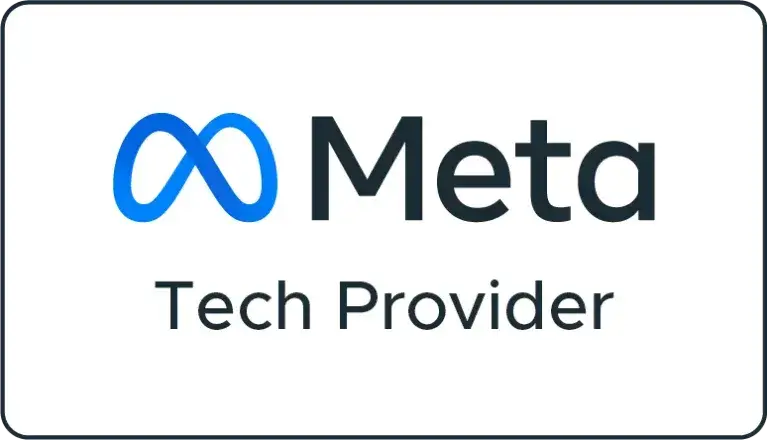Every website owner desires to rank first in Google. Greater rankings mean greater traffic and conversion. A definite methodology will combine both On-page and Off-page SEO with quality content and technical optimization. Here are the steps to get you on the first page of Google.
Table of Contents
1. Proper Keyword Research
Identify the right keywords for your business.
Researching keywords is, therefore, an important stepping stone toward SEO success. First, identify those magic words that your audience is looking for. Tools like Google Keyword Planner, SEMrush, and Ahrefs will help you filter out high-volume, low-competition keywords. Go for long-tail, more specific, hence often much less competitive keywords, which are easier to rank for.
Think of the intent behind the keywords: Are users looking to get informed, intending to buy, or looking for services? This intention will help you make content that answers their need and upping the game to higher rankings. Group your keywords on topics in clusters for effortless production of content.
You can also analyze meaningful ideas that your competitors are targeting with their keywords. Identify the words your competitors are ranking for and the strategy they use. Ahrefs or SEMrush will show which keywords drive traffic to your competitor’s site. Notice any gaps in the content you might fill with better, more comprehensive, or targeted information.
This competitor analysis will help you understand the landscape and identify high-potential keywords with low competition. The tool strategically uses keywords that drive traffic to a site without spending many resources on them. Stay ahead by tracking competitors and adjusting strategy where needed.
2. Optimize On-page SEO
Title Tags and Meta Descriptions
One of the primary building blocks for on-page SEO is the title tag. Make them catchy, including one primary keyword. They will first pop up to users or search engines in your result listing. Keep them no longer than 60 characters so they fit on search result pages. If well-written, they can help make a big difference in getting people to click.
Even though this is not a direct ranking factor, the meta description does decide on the CTR. Hence, it becomes very important to write meta descriptions in such a way that they are compelling and informative by including a target keyword and calling for action. It is ideally 150-160 characters so that everything shows up on the SERPs. Often, an attention-grabbing meta description is the key difference that makes users click on your link ahead of competitors.
Header Tags and Content Optimization
Header tags, such as H1, H2, and H3, organise your content to be more readable to your audience while being more understandable to algorithms. Your H1 shall entail the main keyword of the page. It only needs to state what is on this page. Use H2 and H3 if necessary to break up the content by using subsections that use your secondary keywords.
Another good practice in optimization goes beyond the keywords and makes the content focused on the user and full of information. Add images, videos, or even infographics that would enhance the user experience and increase time spent on your site. Moreover, always refresh your content to keep it fresh and current. This will let the search engine know that your website is still alive, meaning the content still has value.
3. Quality Content
User Intent
Good content can really help you get on the first page of Google. Focus on what your target audience is looking for and why. Design the content to answer, solve, or provide information they would like to gain. Combine different forms of content such as blog posts, videos, or infographics in order to suit taste.
Long-form content does well in search rankings. Any informative content on some particular topic with more than 1,500 words is pretty considerable. Break this up with subheadings, bullet points, and small paragraphs so that it’s easily readable. If the content is of good quality, then users will engage with it, and other sites will want to link back to it. This does help in SEO.
Update Your Content Regularly
Google Inc. likes fresh content. Therefore, rewriting your old content from time to time will make your content fresh and improve your rankings in search engine. Go back to the old posts from time to time and add some new information, update some statistics, or refresh the links that have become outdated. Stress that your site updates information because it is regarded as an authority.
Identify what may need an update using different analytics tools. Pages with dropping traffic or very high bounce rates are really ripe for an update. Keeping this content up-to-date will let it remain useful to users and visibly improve in SERPs.
4. Improve Site Speed and Mobile Optimization
Optimize Site Speed:
Another key ranking factor at Google is, therefore, site speed. It increases the bounce rate of the site and decreases user satisfaction. There are also many analysis tools, such as PageSpeed Insights, GTmetrix, and Pingdom, that can be used to perform a site-speed analysis. Usual recommendations include image optimization, browser caching, and reducing JavaScript.
Another reason a CDN can speed up a site is by spreading content across a number of servers around the world. The website would then be loaded with less delay for any user from any location. Keep in mind that you have to update your site accordingly to maintain top speed.
Optimising for Mobile
The impact is enormous on mobile optimization; most searches nowadays are on mobile. Google has shifted to mobile-first indexing, where it crawls and indexes your site—a responsive website that gives a friendly view to the user on all devices.
Test your site on mobile—for instance, by utilizing Google’s Mobile-Friendly Test. Develop a small screen-friendly layout and ensure that buttons and links are large enough to tap quickly. The majority of test users use the mobile version. Proper mobile site optimization will let you ensure a great user experience and enhance prospects for ranking high on Google.
5. High-Quality Backlinks
Get backlinks from quality content.
Quality sites linking to you tell Google you are trustworthy and an authority. Create links worthy of being linked to—very high-quality content. Create linkable assets, such as detailed guides, case studies, and original research. Outreach to the experts and bloggers in your industry. Share with them what you’ve made and request a link from them.
Guests post on high-authority websites within your niche. Basically, to write some fantastic articles for another person’s website with a link back to yours. So, these create links to your website as people share your content around the web for more traffic.
Check for and Disavow Toxic Backlinks
Not all links are equal. In fact, most are actually harmful if they truly are bad backlinks from low-domain authority sites or spammy sites. Keep a close eye on your backlink profile in Google Search Console and other tools, including Ahrefs. Whenever you see harmful backlinks, disavow them with the Google Disavow tool so they don’t hurt your site’s SEO.
Not only will running regular backlink audits keep your link profile clean and authoritative, but top-tier backlinks coming from quality websites will increase your rankings.
Social media platforms are great channels for sharing content and directing people to your site. Share your blog posts, videos, or any other content on Facebook, Twitter, LinkedIn, Instagram, and the like. Give a little context accompanying your shares and drive more interest and views using images and videos.
Engage with every comment and question to showcase interaction. The more you engage with your target audience, the more you grow. More significantly, the more backlinks you generate, the higher your search engine rankings become. Be sure to monitor your social media performance regularly. This tells you what type of content your audience is most responsive to.
Use Social Signals
While that doesn’t mean that social signals can’t indirectly affect rankings, the better one is at social media activity, the larger the number of eyeballs on a piece of your content will be, and the more traffic to a website. Encourage sharing and discussion of your content with your followers.
This can also be done through relevant online communities and forums. Share what you know, answer their questions, and provide valuable insights that will make them respect you as an expert in your field. Thus, more traffic, backlinks, and improved ranking can be generated in search engines.
6. Technical SEO Implementation
Crawl Errors Fixing and Sitemap Optimisation
Technical SEO will ensure search engines crawl through and index your website without hiccups. For crawling errors, it depends upon tools such as Google Search Console to fix mistakes of broken links and server errors to ensure a hiccup-free crawl. You will also need to submit an XML sitemap to Google in order to let search engines know the structure of your website for effective indexing of the pages.
Make sure that there is an optimized Robots.txt file on your website, which would allow search engine crawlers to instruct them to index all the important pages during the crawling process. Properly cleaned crawling procedure helps maximize the visibility of a site in the results pages of search engines.
Schema Markup:
Schema markup will explain the content’s context to search engines. Once schema markup is implemented, rich snippets—star ratings, images, and other details related to the information—will also show up in the end results, which will help optimize CTR and SERPs.
Now, apply schema markup on your website. You can put the markup into effect using Google’s Structured Data Markup Helper and test it regularly using Google’s Rich Results Test to help you ensure you’re properly setting up your markup without errors. These enriched search results show additional possibilities for clicks to your website and improve your existence.
7. Analytics and Data at Work
Track your website performance; it’s the key to preserving and building performance. Google Analytics and Google Search Console should help you track major performance metrics, mainly Organic traffic, Bounce rates, and Keyword rankings. Based on the information you get from these sources, focus on matters that need improvement and readjust your strategies.
Set up goals and conversion tracking for the SEO campaign. Through measurement, one will know which techniques and strategies generate the most traffic and conversions. This will ensure that time and resources are spent more on the most fruitful ones.
Split Testing
One version of the test pits a variation of a webpage or an element against the original for interaction to see which one fares better. You can A/B test your headlines, CTAs, and elements to perform better on your site. You can run tests and analyze the results with Google Optimize.
Testing and ongoing improvement ensure a great user experience with a website serving its target audience, among other services. These improvements could lead to higher engagements, lower bounces, and better rankings.
FAQs
Q: What are some practical ways of building backlinks?
Practical ways to build backlinks involve creating high-quality content based on what’s shareable, guest posting, outreach to industry influencers and mention on relevant industry sites. All these will help you generate links from relevant authoritative sites.
Q: How important is mobile optimization for SEO?
You need to ensure that your website is responsive; after all, Google uses mobile-first indexing. Not only does this serve as an excellent user experience, but it’s also about to impact rankings directly. Ensure running a responsive design, and always test the relevance and the efficiency of the site in mobile viewports.
Q: Does social media have something to do with my search performance?
Although social signals are not ranking factors, they optimize your SEO through maximum visibility. Indeed, an adequately shared piece of content may get anywhere from 5 to 10 tweets/re-shares, and that definitely would raise your website traffic.













